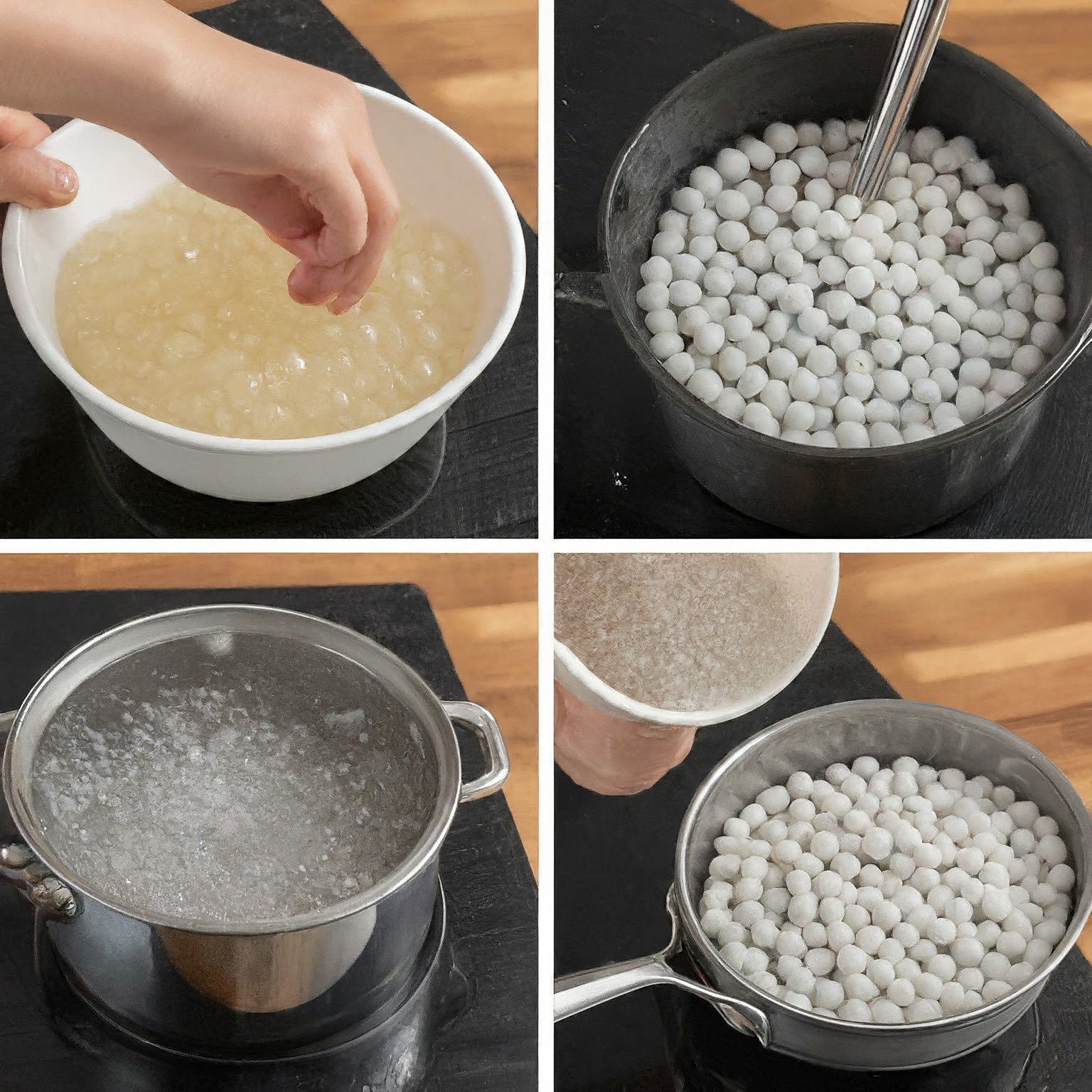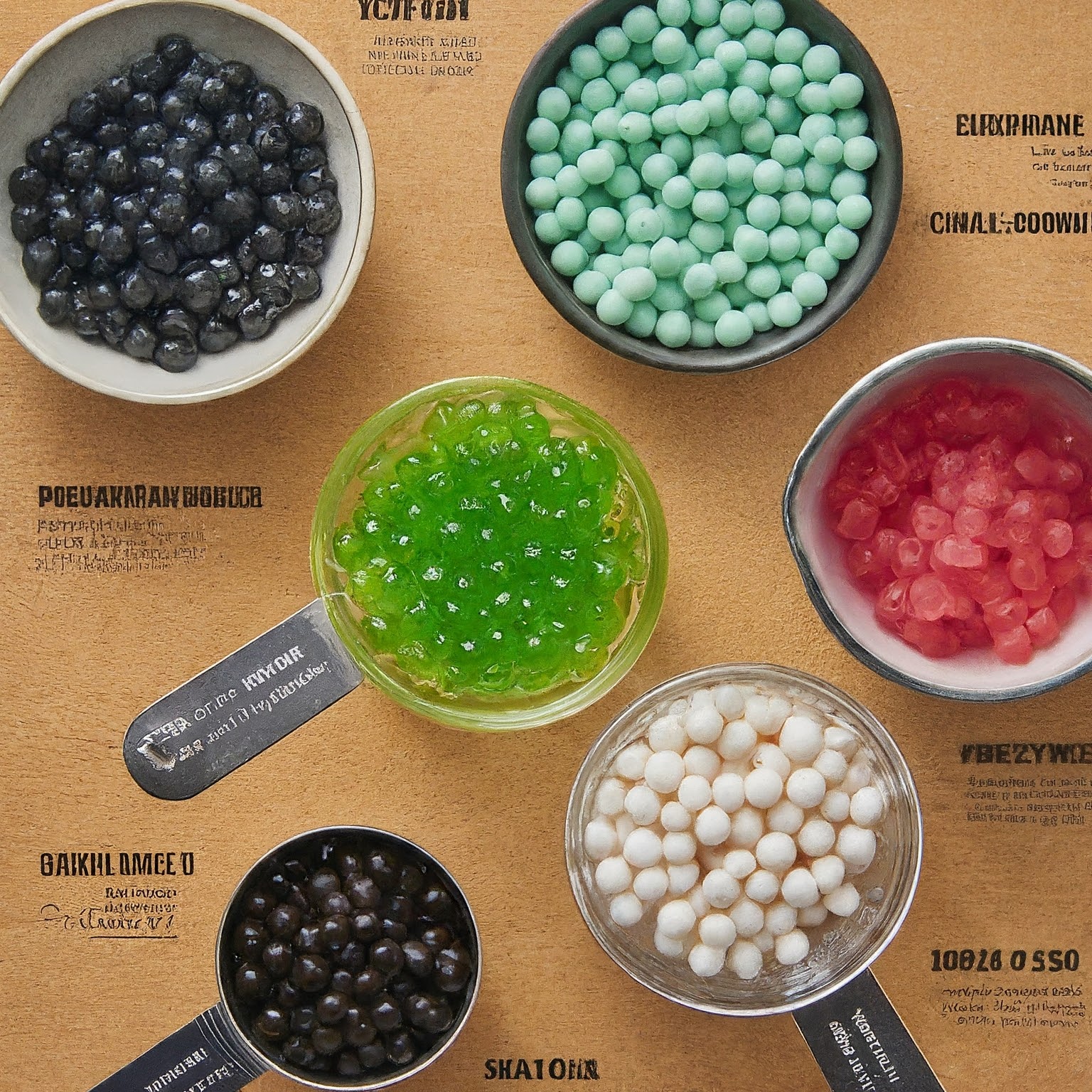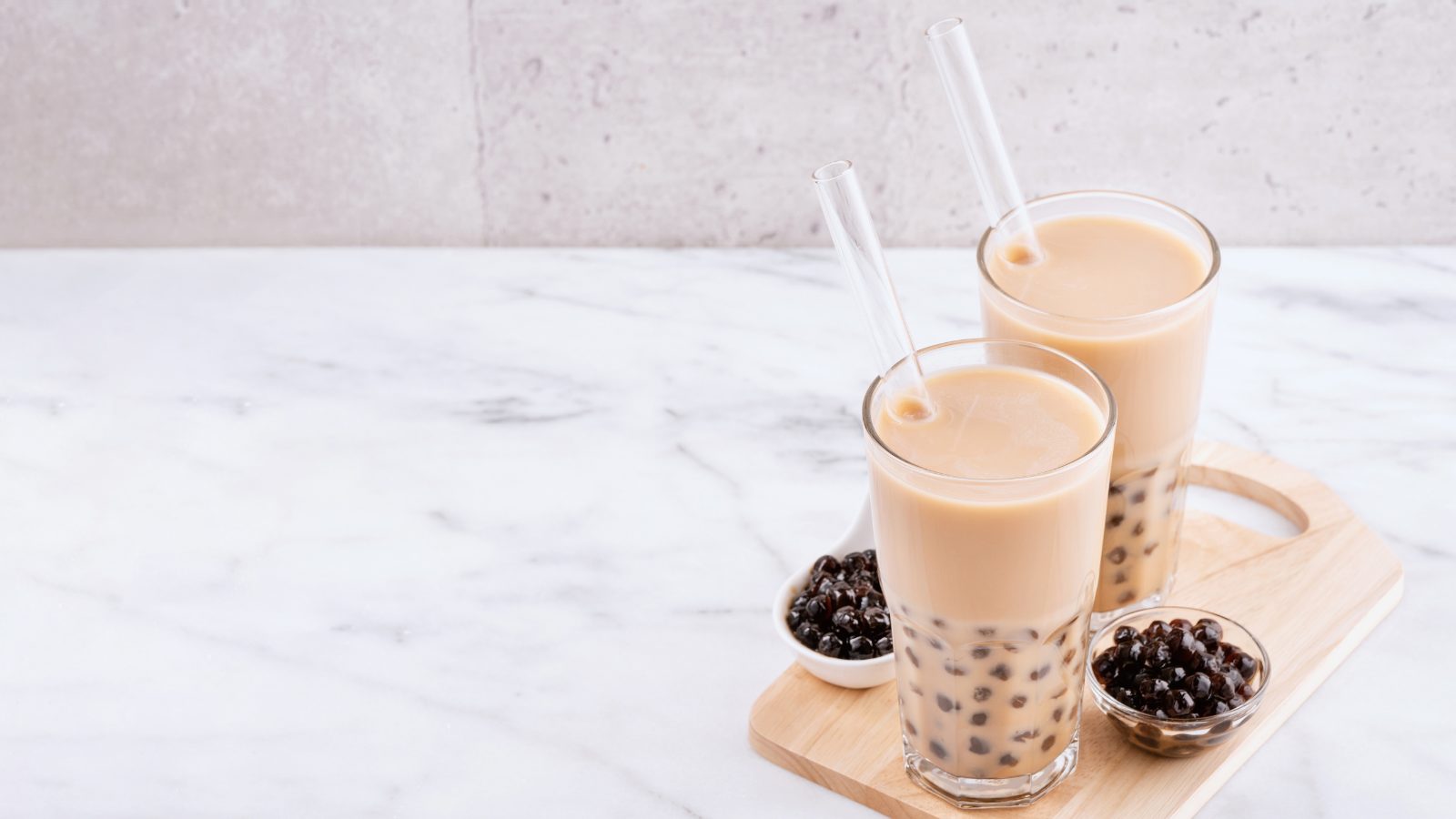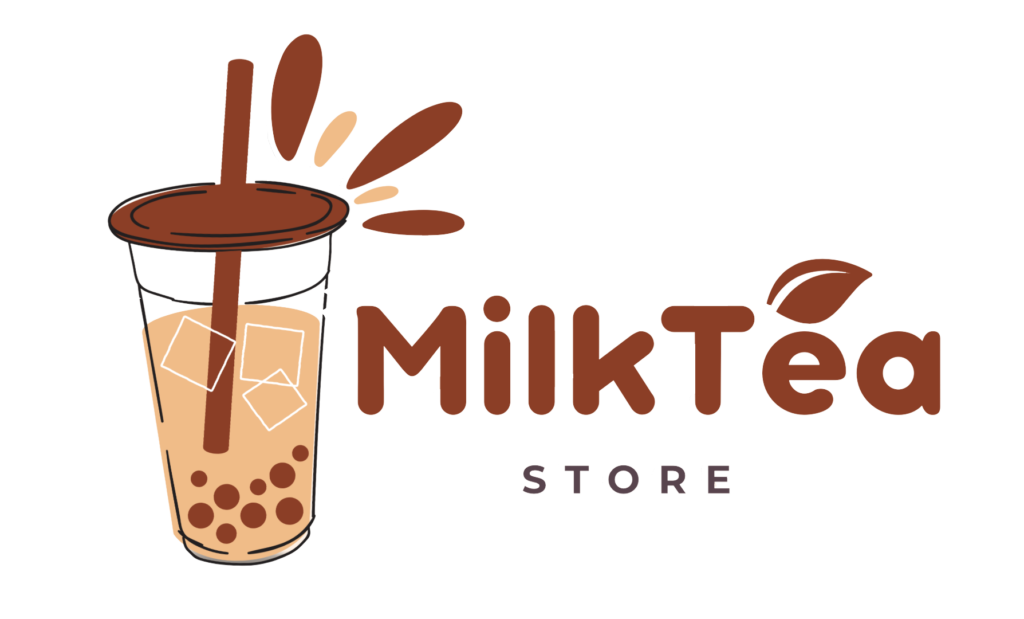The Boba Masterclass offers a comprehensive guide to crafting the iconic chewy tapioca pearls, mastering tea brewing techniques, and achieving the perfect balance of flavors and textures, elevating the art of bubble tea-making to new heights.
Unlock the Secrets of Chewy Boba: A Masterclass in Cooking Methods
Bubble tea, also known as boba tea, has become a popular beverage around the world. Originating in Taiwan in the 1980s, bubble tea is a unique drink that combines tea, milk, and various flavors with chewy tapioca pearls, also known as boba pearls. These pearls are an essential ingredient in bubble tea and add a delightful texture to the drink.
Boba pearls are made from tapioca starch, which is derived from the cassava root. The starch is mixed with water and shaped into small balls before being cooked. The cooking process transforms the starch into a chewy and translucent texture that is loved by bubble tea enthusiasts.
The importance of boba pearls in bubble tea cannot be overstated. They not only add a fun and unique texture to the drink but also provide a burst of flavor with every bite. The chewiness of the pearls creates a satisfying experience for those enjoying bubble tea, making it a favorite among people of all ages.
Understanding the Different Types of Boba Pearls
There are several different types of boba pearls available, each offering a unique taste and texture. Here are some of the most popular types:
1. Tapioca Pearls: These are the classic boba pearls that most people are familiar with. They have a chewy texture and a neutral flavor, allowing them to absorb the flavors of the tea and other ingredients in bubble tea.
2. Fruit-flavored Pearls: These boba pearls are infused with fruit flavors such as strawberry, mango, or lychee. They add an extra burst of fruity flavor to the drink and can be paired with corresponding fruit syrups or teas.
3. Jelly Pearls: Jelly pearls are made from agar-agar, a gelatinous substance derived from seaweed. They have a softer and more delicate texture compared to tapioca pearls. Jelly pearls come in a variety of flavors, including coconut, pineapple, and peach.
4. Popping Boba: Popping boba is a newer addition to the boba pearl family. These small, juice-filled balls burst in your mouth, releasing a burst of flavor. Popping boba comes in a range of flavors, such as strawberry, mango, and passion fruit.
| Type of Boba | Description | Flavor | Texture | Best Uses |
|---|---|---|---|---|
| Tapioca Pearls | Made from tapioca starch, most common type | Neutral, takes on the flavor of tea/syrup | Chewy, slightly bouncy | Classic milk teas, bubble tea |
| Popping Boba | Thin, juice-filled spheres | Various fruity flavors (strawberry, mango, etc.) | Bursts in your mouth, releasing flavor | Fruit-flavored milk teas, frozen yogurt toppings |
| Brown Sugar Boba | Tapioca pearls cooked in brown sugar syrup | Sweet, caramel-like | Extra chewy, slightly sticky | Enhanced sweetness in milk teas |
| Jelly Boba | Made from various types of jelly (coconut, grass jelly, etc.) | Range of flavors depending on jelly type | Soft, jelly-like, less chewy | Specialty teas, desserts |
| Agar Boba | Made from agar, a seaweed-based jelly | Neutral flavor | Firmer texture, less chewy | Smoothies, desserts where shape is important |
Choosing the Right Cooking Method for Your Boba Pearls
When it comes to cooking boba pearls, there are several factors to consider, including the desired texture and the type of pearls being used. Here are some cooking methods commonly used for boba pearls:
1. Boiling: Boiling is the most common method for cooking boba pearls. It involves boiling the pearls in a pot of water until they become soft and chewy. This method is relatively quick and easy, making it a popular choice for home cooks.
2. Steaming: Steaming boba pearls is a healthier alternative to boiling as it requires less water and retains more nutrients. Steaming also helps to maintain the shape and texture of the pearls without making them too soft or mushy.
3. Sous Vide: Sous vide is a cooking technique that involves sealing the boba pearls in a vacuum-sealed bag and cooking them in a water bath at a precise temperature for an extended period. This method ensures that the pearls are cooked evenly and retain their shape and texture.
How to Cook Boba Pearls using the Boiling Method
The boiling method is the most common and straightforward way to cook boba pearls. Here’s a step-by-step guide on how to cook them:
1. Bring a pot of water to a boil. The general rule of thumb is to use 10 parts water for every 1 part boba pearls.
2. Once the water is boiling, add the boba pearls slowly, stirring gently to prevent them from sticking together.
3. Cook the pearls for about 10-15 minutes or until they become soft and chewy. Keep in mind that the cooking time may vary depending on the size and type of pearls.
4. Once the pearls are cooked, remove them from the pot using a slotted spoon and transfer them to a bowl of cold water to stop the cooking process.
5. Drain the pearls and rinse them under cold water to remove any excess starch.
6. The boba pearls are now ready to be added to your bubble tea or stored for later use.
To achieve the perfect texture for your boba pearls, it’s important to pay attention to the cooking time. Overcooking can result in mushy pearls, while undercooking can leave them hard and chewy. It may take some trial and error to find the ideal cooking time for your preferred texture.
The Steaming Method: A Healthier Alternative to Boiling Boba Pearls
Steaming boba pearls is a healthier alternative to boiling as it requires less water and retains more nutrients. Here’s how to steam boba pearls:
1. Fill a steamer pot with water and bring it to a boil.
2. Place the boba pearls in a heatproof bowl or steamer basket, ensuring that they are evenly spread out.
3. Place the bowl or steamer basket in the steamer pot, making sure that it is elevated above the water level.
4. Cover the pot with a lid and steam the pearls for about 20-30 minutes or until they become soft and chewy.
5. Once cooked, remove the boba pearls from the steamer and transfer them to a bowl of cold water to stop the cooking process.
6. Drain and rinse the pearls under cold water before using them in your bubble tea or storing them for later use.
Steaming boba pearls helps to maintain their shape and texture without making them too soft or mushy. It also allows the pearls to retain more nutrients compared to boiling.
The Sous Vide Technique: Achieving Perfectly Cooked Boba Pearls
Sous vide is a cooking technique that involves sealing the boba pearls in a vacuum-sealed bag and cooking them in a water bath at a precise temperature for an extended period. This method ensures that the pearls are cooked evenly and retain their shape and texture. Here’s how to cook boba pearls using sous vide:
1. Fill a large pot or container with water and attach a sous vide precision cooker to the side.
2. Set the temperature to 175°F (80°C) and allow the water to come to the desired temperature.
3. Place the boba pearls in a vacuum-sealed bag, ensuring that they are evenly spread out.
4. Seal the bag using a vacuum sealer or by using the water displacement method.
5. Submerge the bag of boba pearls in the water bath and cook for 2-3 hours.
6. Once cooked, remove the bag from the water bath and transfer the pearls to a bowl of cold water to stop the cooking process.
7. Drain and rinse the pearls under cold water before using them in your bubble tea or storing them for later use.
Cooking boba pearls using sous vide ensures that they are cooked evenly and have a consistent texture throughout. This method is especially useful when cooking large batches of boba pearls as it eliminates the risk of overcooking or undercooking.
Making Tapioca Pearls from Scratch: A Step-by-Step Guide
If you’re feeling adventurous, you can try making tapioca pearls from scratch. Here’s a step-by-step guide:
Ingredients:
– 1 cup tapioca starch
– 1/2 cup boiling water
– 1/4 cup brown sugar (optional)
– Cold water for rinsing
Equipment:
– Mixing bowl
– Wooden spoon
– Rolling pin
– Knife or pizza cutter
– Pot of boiling water
1. In a mixing bowl, combine the tapioca starch and boiling water. Mix well until a dough forms.
2. Knead the dough until it becomes smooth and pliable. If desired, you can add brown sugar to the dough for added sweetness.
3. Divide the dough into small portions and roll each portion into a long rope, about 1/4 inch in diameter.
4. Cut the rope into small pieces, about 1/4 inch in length. You can shape them into small balls or leave them as is.
5. Bring a pot of water to a boil and add the tapioca pearls. Stir gently to prevent them from sticking together.
6. Cook the pearls for about 10-15 minutes or until they become soft and chewy.
7. Once cooked, remove the pearls from the pot using a slotted spoon and transfer them to a bowl of cold water to stop the cooking process.
8. Drain and rinse the pearls under cold water before using them in your bubble tea or storing them for later use.
Making tapioca pearls from scratch allows you to customize the size and shape of the pearls according to your preference. It’s a fun and rewarding process that can elevate your bubble tea experience.
Enhancing the Flavor of Boba Pearls with Syrups and Flavorings
While boba pearls have a neutral flavor on their own, they can be enhanced with syrups and flavorings to add an extra burst of flavor to your bubble tea. Here are some popular options:
1. Fruit Syrups: Fruit syrups such as strawberry, mango, or lychee can be added to boba pearls to infuse them with fruity flavors. Simply mix the cooked pearls with the desired fruit syrup until they are well coated.
2. Milk Tea Flavorings: If you prefer a more traditional bubble tea flavor, you can add milk tea flavorings such as matcha, taro, or Thai tea to the boba pearls. Mix the cooked pearls with the desired flavoring until they are well coated.
3. Honey or Agave Nectar: For a natural and subtle sweetness, you can drizzle honey or agave nectar over the cooked boba pearls. This adds a touch of sweetness without overpowering the flavor of the pearls.
When adding syrups or flavorings to boba pearls, it’s important to consider the texture. Avoid adding too much liquid as it can make the pearls too soft or mushy. Start with a small amount and gradually add more until you achieve the desired flavor.
Storing and Preserving Boba Pearls for Later Use
If you have leftover boba pearls or want to prepare them in advance, it’s important to store and preserve them properly to maintain their texture and flavor. Here are some best practices:
1. Store in Syrup: If you’ve added syrups or flavorings to your boba pearls, store them in an airtight container with the syrup. This helps to keep the pearls moist and prevents them from drying out.
2. Store in Water: If you prefer plain boba pearls without any added flavorings, store them in a container filled with water. Change the water every day to prevent any bacterial growth.
3. Freeze for Long-Term Storage: If you want to store boba pearls for an extended period, you can freeze them. Place the cooked and cooled pearls in an airtight container or freezer bag and freeze for up to 3 months. Thaw them in the refrigerator before using.
When using stored boba pearls, it’s important to rinse them under cold water to remove any excess starch or syrup before adding them to your bubble tea.
Troubleshooting Common Boba Pearl Cooking Problems
Cooking boba pearls can sometimes be tricky, and you may encounter some common issues. Here are some tips for troubleshooting and fixing problems:
1. Pearls are Too Hard: If your boba pearls turn out too hard, it may be because they were not cooked long enough. Increase the cooking time by a few minutes and test the texture until they become soft and chewy.
2. Pearls are Too Soft or Mushy: Overcooking boba pearls can result in a soft or mushy texture. Reduce the cooking time and test the texture periodically until they reach the desired consistency.
3. Pearls Stick Together: To prevent boba pearls from sticking together, make sure to stir them gently while cooking. You can also rinse them under cold water after cooking to remove any excess starch.
4. Pearls Lose Their Shape: If your boba pearls lose their shape during cooking, it may be because the water is not boiling vigorously enough. Increase the heat and ensure that the water is at a rolling boil before adding the pearls.
5. Pearls Have an Unpleasant Taste: If your boba pearls have an unpleasant taste, it may be due to the water used for cooking. Make sure to use filtered or bottled water to avoid any off-flavors.
By troubleshooting these common issues, you can ensure that your boba pearls turn out perfectly every time.
Experimenting with New Boba Pearl Recipes: Tips and Tricks for Creativity
Once you’ve mastered the art of cooking boba pearls, it’s time to get creative and experiment with new recipes. Here are some ideas to inspire you:
1. Matcha Boba Latte: Add matcha powder to your boba pearls for a vibrant green color and a subtle earthy flavor. Pair them with a creamy milk tea base for a delicious matcha boba latte.
2. Fruity Boba Smoothie: Blend your favorite fruits with ice, milk, and boba pearls to create a refreshing and fruity smoothie. Try combinations like strawberry-banana, mango-pineapple, or mixed berry.
3. Chocolate Boba Milkshake: Add cocoa powder or chocolate syrup to your boba pearls for a rich and indulgent chocolate flavor. Blend them with ice cream and milk for a decadent chocolate boba milkshake.
4. Spiced Chai Boba Tea: Infuse your boba pearls with warm spices like cinnamon, cardamom, and cloves for a fragrant and comforting spiced chai flavor. Pair them with black tea and milk for a delicious spiced chai boba tea.
When experimenting with new boba pearl recipes, don’t be afraid to mix and match flavors, textures, and ingredients. The possibilities are endless, and you may discover your new favorite bubble tea combination.
Conclusion:
Boba pearls are an essential ingredient in bubble tea, adding a unique texture and burst of flavor to the drink. Understanding the different types of boba pearls and choosing the right cooking method is key to achieving the perfect texture. Whether you prefer boiling, steaming, or sous vide cooking, there are various techniques to suit your preference.
Experimenting with new boba pearl recipes is a fun way to get creative and elevate your bubble tea experience. From fruity smoothies to indulgent milk teas, there are endless possibilities to explore. One exciting boba pearl recipe to try is the matcha-infused pearls.
By infusing the pearls with matcha powder, you can add a subtle earthy flavor and vibrant green color to your drink. Another unique option is the taro-flavored pearls, which complement creamy taro milk teas perfectly.
For those who enjoy a burst of freshness, consider making fruit-flavored pearls using real fruit puree or juice. Whether you prefer classic flavors or want to venture into uncharted territory, experimenting with boba pearl recipes allows you to customize your bubble tea and take it to the next level of deliciousness.
Originally posted 2024-01-15 04:15:32.





